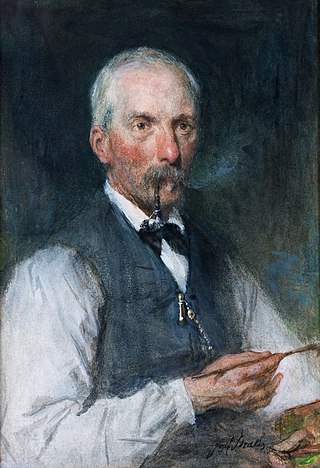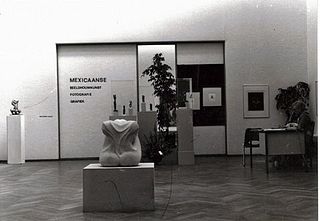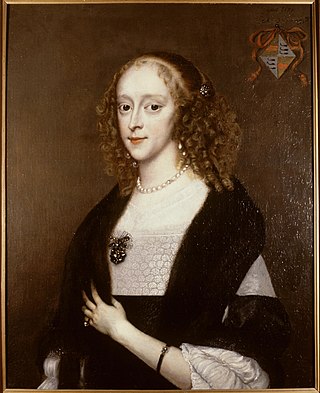
Middelburg is a city and municipality in the south-western Netherlands serving as the capital of the province of Zeeland. Situated on the central peninsula of the Zeeland province, Midden-Zeeland, it has a population of about 48,000.

Jan Hendrik Weissenbruch, also known as Hendrik Johannes Weissenbruch was a Dutch painter of the Hague School. He is noted especially for his watercolours.
Ariana Nozeman : born Ariana van den Bergh, was the first woman to play a leading role in a public play in The Netherlands. She made her debut on stage on April 19, 1655, at the Amsterdam Schouwburg in a play by Jan Jacobsz. Schipper which incidentally bore her name ‘Onvergelijkelijke Ariana’.

Lily Geertruida Maria Henriëtte Bouwmeester was a Dutch theater and film actress, who was crowned with a Golden Calf for being "the best actress in Pre-War Dutch cinema".
Elisabeth Mooij, also known as Elisabeth Ghijben, was a Dutch actress. She was among the biggest stars in the Netherlands in her time.

Francine Marie Jeanne Houben is a Dutch architect. She graduated with cum laude honours from the Delft University of Technology. She is the founding partner and creative director of Mecanoo architecten, based in Delft, The Netherlands.

Pulchri Studio is a Dutch art society, art institution and art studio based in The Hague ('s-Gravenhage), Netherlands.

Maria Francisca Bia known as Mimi Bia and as Mimi Engelman-Bia and Mimi de Vries-Bia was a Dutch ballet dancer, opera singer (soprano) and dramatic stage actress. Starting her career as a ballet dancer, she had a parallel career as both a soprano opera singer as well as a dramatic stage actress at the Amsterdamse Schouwburg, where she had a dominant role within the Dutch theatre world. She was the manager director and owner of the theatre Utrechtse Schouwburg in Utrecht in 1875-1880.
Dorotea van Fornenbergh, was a Dutch stage actor.

Nelly van Doesburg was a Dutch avant-garde musician, dancer, artist and art collector. She performed under her dadaïst alias Pétro van Doesburg and used the pseudonym Cupera for her work as a painter.

Maria Elisabeth Ziesenis, later Lampe was a German painter.

Adri Bleuland van Oordt was a Dutch artist and draftswoman who was active from around 1877 until her death in 1944.

Jan Willem "Willy" Sluiter was a Dutch painter. He was best known for his paintings of Dutch villages and its dwellers, and also did portraits of members of Dutch high society. His work was part of the art competitions at four Olympic Games.

Mien van Wulfften Palthe was a Dutch feminist and pacifist. As a member of the Vereeniging voor Vrouwenkiesrecht and Women's International League for Peace and Freedom, she strove to secure enfranchisement for women and worked as an advocate for peace.
Jakoba Wouters was a Dutch stage actor, ballet dancer and opera singer.

Wendela Bicker was the wife of Johan de Witt. She was one of the richest young female commoners of her time and she married one of the most influential republican politicians in the Netherlands. She was in the public eye during her lifetime and entered history books thereafter. This is facilitated by the letters and the housekeeping books she left behind. The narrative about her life reflects how the role of women in the Netherlands in the 17th century was and is understood.

Andries Snoek was a Dutch actor and director. He was born in Rotterdam, the son of Jan Snoek and Helena de Ruyter, and the brother of actresses Anna Maria and Helena Snoek. Despite his low birth, he became one of the most famous northern Dutch actors of his time. In 1791 he joined the Nederduitse Acteurs of Ward Bingley. In response to the Batavian Revolution, Snoek left Rotterdam. Liesbeth Sparks calls him a “‘method actor’ avant la lettre”.

Johanna Henriette Derkinderen-Besier was a Dutch needle artist, fashion historian and publicist who was known professionally under the name J. H. Derkinderen-Besier.

Wilhelmina Gerretje Sablairolles was a Dutch stage actress. She was born into a thespian family and began her career as a child. As an young woman, she performed in breeches and ingénue roles. Her stage career lasted for forty-two years.















